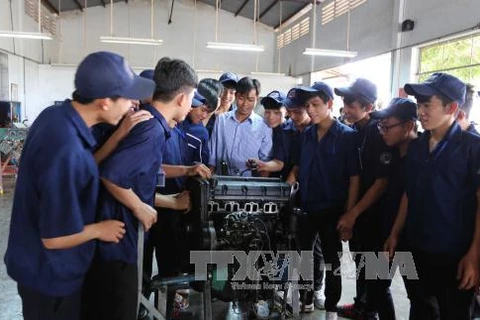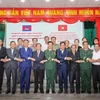Hanoi (VNA) – As many as 86 percent of Vietnamese workers in the garment-textiles and leather-footwear industries may face unemployment due to automation, according to a report released recently by the International Labour Organisation (ILO).
The report, entitled “ASEAN in transformation: How technology is changing jobs and enterprises”, forecasts that three-fourths of labourers working in the electric and electronic sector might be replaced by robots.
These are major export sectors of Vietnam, which account for nearly 40 percent of the total workforce in production. However, the garment-textiles and leather-footwear industries, which employ mostly unskilled labourers, are facing an alarming low productivity which is equal to only 20 percent of that of Thailand.
At the same time, the ILO report held that the improvement of workforce skills should be an important task of Vietnam as the country is facing changes in the nature of jobs in the technology era when unskilled workers may be replaced by automation.
David Lamotte, ILO Vice Director for Asia-Pacific, said that the changes will take place in the next few years as cost for technology will decrease while that for workforce will increase.
According to the Ministry of Labour, Invalids and Social Affairs, in the 2017-2025 period, Vietnam’s workforce will rise 1.28 percent or 723,000 people per year, while the total workforce will reach 62 million in 2025.
In order to provide jobs for all, the economy should create additional 650,000 jobs, according to the ministry, adding that transforming labour structure is a way to increase labour productivity.
By 2016, only 11.2 million labouers in the total number of 56.4 million, or 20.6 percent, have been trained. The qualifications of labourers are different between urban and rural areas, while the trained workforce has yet to match the market’s requirements, said the ministry.-VNA
The report, entitled “ASEAN in transformation: How technology is changing jobs and enterprises”, forecasts that three-fourths of labourers working in the electric and electronic sector might be replaced by robots.
These are major export sectors of Vietnam, which account for nearly 40 percent of the total workforce in production. However, the garment-textiles and leather-footwear industries, which employ mostly unskilled labourers, are facing an alarming low productivity which is equal to only 20 percent of that of Thailand.
At the same time, the ILO report held that the improvement of workforce skills should be an important task of Vietnam as the country is facing changes in the nature of jobs in the technology era when unskilled workers may be replaced by automation.
David Lamotte, ILO Vice Director for Asia-Pacific, said that the changes will take place in the next few years as cost for technology will decrease while that for workforce will increase.
According to the Ministry of Labour, Invalids and Social Affairs, in the 2017-2025 period, Vietnam’s workforce will rise 1.28 percent or 723,000 people per year, while the total workforce will reach 62 million in 2025.
In order to provide jobs for all, the economy should create additional 650,000 jobs, according to the ministry, adding that transforming labour structure is a way to increase labour productivity.
By 2016, only 11.2 million labouers in the total number of 56.4 million, or 20.6 percent, have been trained. The qualifications of labourers are different between urban and rural areas, while the trained workforce has yet to match the market’s requirements, said the ministry.-VNA
VNA























